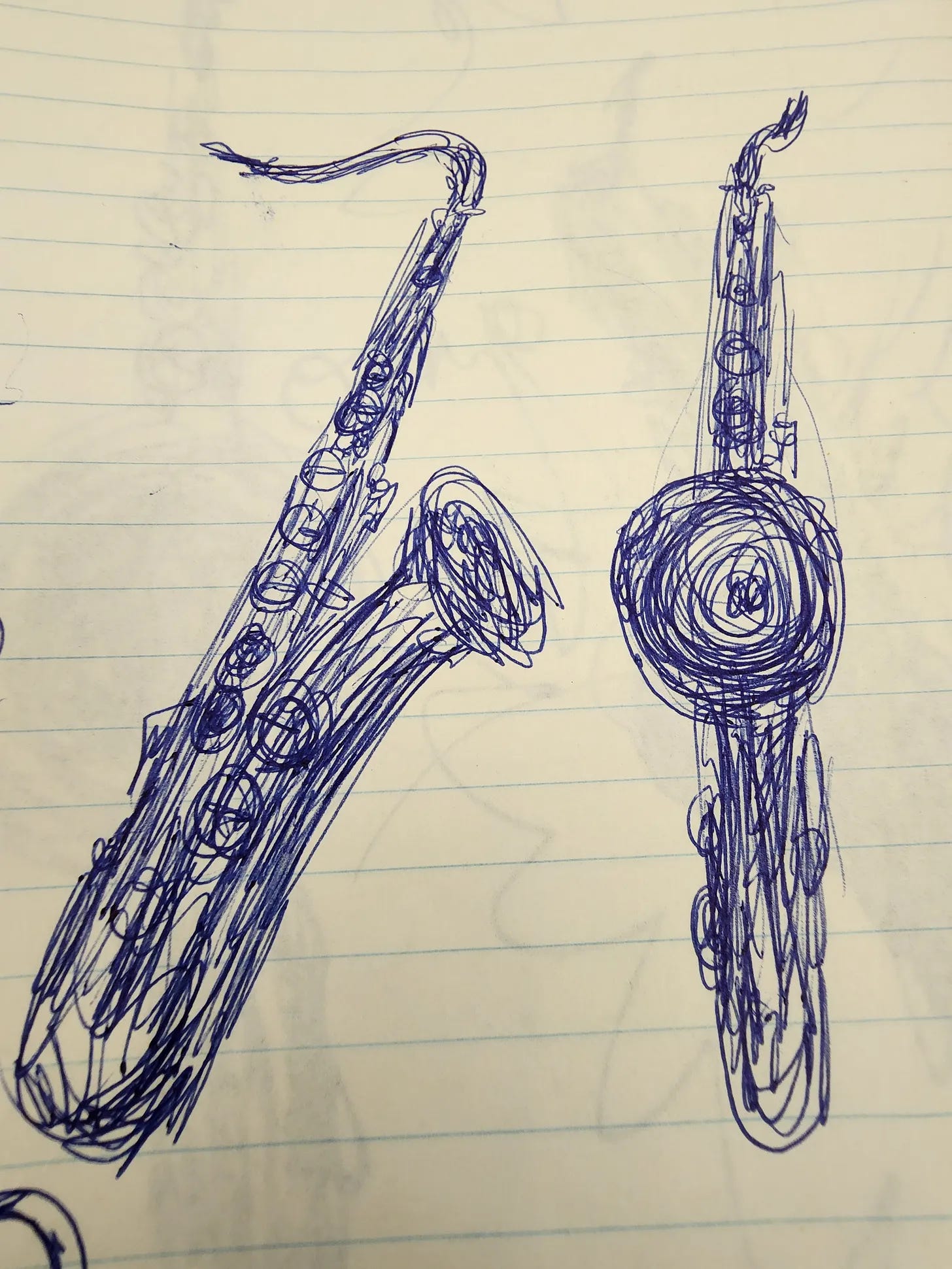Weekly Groundings are published every Friday to highlight the most interesting news, links, and writing I investigated during the past week. They are designed to ground your thinking in the midst of media overload and contribute to Handful of Earth’s broader framework. Please subscribe if you’d like to receive these posts directly in your inbox.
“Forget No Labels. Biden’s Third-Party Peril is on the Left.”
At Politico, Jonathan Martin argues that the biggest threat to Joe Biden’s re-election is not from the right or the center, but from the left. He asks “how many more polls do there have to be of [Robert] Kennedy near double-digit votes in swing states before he’s taken seriously? And: how many Biden speeches must be shouted down until Democrats realize that a hot war in Gaza this fall may mean 30,000 fewer votes apiece in Madison, Dearborn and Ann Arbor and therefore the presidency?”
Martin then reports on a forthcoming “multi-pronged offensive against Kennedy, [Jill] Stein and [Cornel] West, some of which will come from the campaign and some from outside entities.” According to one Biden official: “We can set this up very directly: it’s us versus them — and us is just voting for us, and them means voting for a third-party or Trump.” This impending offensive, perhaps a sequel to the shadow campaign that saved the 2020 election, “In the short term, means seizing on any chance to complicate the ballot access of the third-party candidates and attempting to discredit their motives or at least highlight the less savory aspects of their character.”
“Biden’s Foreign-Policy Abyss”
It is not only the Biden administration’s support of the Israeli siege on Gaza that has undermined his domestic support. At Compact Magazine, John B. Judis offers a moderate and measured appraisal of Biden’s broader foreign policy, concluding that, if “success in foreign policy can be gauged by whether an administration can see beyond immediate events and anticipate and head off trouble before it arises…the Biden administration has been an abysmal failure.”
Judis continues: “The misjudgments of the Biden administration and the wider establishment may have also stemmed from adherence to a foreign-policy idealism, mixed with tough-guy hawkishness that has gotten the United States in trouble before. The administration has portrayed itself as the defender of democracy against autocracy and of ‘rules-based order [against] one governed by brute force,’ but the conflicts of nations continue to defy these antinomies. In Ukraine, its attempt to defend a fragile democracy against an overweening autocracy may severely damage that country. In the war in Gaza, the United States finds itself cast as the supporter of brute force. Just as Americans and many of the world’s people had to pay a high price for George W. Bush’s ‘Freedom Agenda,’ we and they may have to pay a price for the Biden administration’s missteps in the Middle East, South Asia, and Ukraine.”
“Visual Analysis: Gazans’ Last Refuge Becomes Israel’s Next Target”
The Financial Times reports on Israel’s consistent strategy of declaring and then subsequently decimating “safe havens” in Gaza: “When it invaded Gaza, the Israeli army had demanded civilians head south — and most of them did, heading first to Khan Younis, Gaza’s second-largest city and a Hamas stronghold. Then, in early December, the Israel Defense Forces started operating in Khan Younis, which by then had swollen with hundreds of thousands of internally displaced people. The city was devastated by mid-January and civilians fled further south to Rafah. Rafah has been transformed by the deluge of those forcibly displaced from the north. Some live with friends or relatives, dozens to a flat, with the men and women taking turns to sleep. ‘Living like sardines in a can,’ one person said. But most displaced people shelter in vast tent cities that now stretch from the south-west edge of Rafah, along the Egyptian border, to near the sea on the west.”
“Anxiety, Mood Swings and Sleepless Nights: Life Near a Bitcoin Mine”
The New York Times chronicles the struggle between bitcoin mining companies and residents in Arkansas who experience “various health problems, including increased blood pressure, anxiety, difficulty sleeping and mood swings” as a result of the mines’ massive noise pollution. According to one resident living near a bitcoin mine, “Computers have been running mostly around the clock…creating so much noise — they require constant cooling by loud fans — that her son no longer goes outside. ‘The reason we moved out here was to get away from people, get away from noise,’ she said…Her son, who requires full-time care for autism, has also grown more agitated and aggressive, she said. ‘It’s exhausting mentally, emotionally, physically,’ Ms. Anderson said.”
This is one more reminder that high tech operations like bitcoin depend on ecological and human degradation just as much if not more than older technologies. Yet the argument for the inevitability of technological progress, which I discussed this week in my essay, “The Era When Nothing Ever Ends,” is designed to make it impossible for us to imagine a world without this inexorable forward march.
“Cars and Caste Pride”
offers a fascinating photo essay on recent Maratha reservation protests in Mumbai, India presented through the lens of transport: “Observing the protests in Mumbai, it becomes evident that the demonstrators from the Maratha community include both the well-off, driving muscular cars and seeking power, and the less privileged, comprising farm labourers who are landless and rely on hired transportation such as station wagons, trucks, two-wheelers, and cycles.” Here are two of the many featured photos: “Time to End the 20-th Century Education - Part I”
offers a critique of still dominant twentieth-century educational models at . He points out the “fact that most inventors, geniuses, and not rarely corporate leaders too, either did not attend schools that focus exclusively on a technical apprenticeship aimed solely at attaining a professional certificate or even did not go to school at all. It may be argued that they were geniuses just because they could make it nevertheless, even without attending a standard school system. But are we sure that truth does not go the other way around? The choice to let them be free to learn by themselves was the key, and they might never have become known if they had been forced into schools with strict paths and curricula.” Masi then goes on to describe the education system as “a dictatorship without a dictator. And precisely for that reason, it is difficult to become aware of it, since there is no physical person to blame, and yet the machine continues to churn.”
“The Mind of Sonny Rollins”
reproduces some items from saxophonist Sonny Rollins’ papers for : “The Schomburg Center for Research in Black Culture has the great jazz saxophonist’s archives and the collected papers are full of jewels about the artistic process of this phenomenal soloist and composer. Sonny was obsessed with study and rehearsal, so much so that he claimed to enjoy practice more than performing for an audience. His archive is full of notes on technique and practice habits as well as illustrations that feature caricatures of himself and saxophones. Sonny didn’t just make it up as he went along, but had a philosophy of music informed by Buddhism, yoga, and the streets of his native New York. He lives quietly in Woodstock, New York now, having had to give up a playing a few years back. But, in conversation, his mind is sharp as he recalls events from seventy years ago.”This is an archive I have visited myself and I’d highly recommend checking it out if you’re in New York.
What grounded your thinking this week? Feel free to share in the comments.








Thank you,, Vincent!